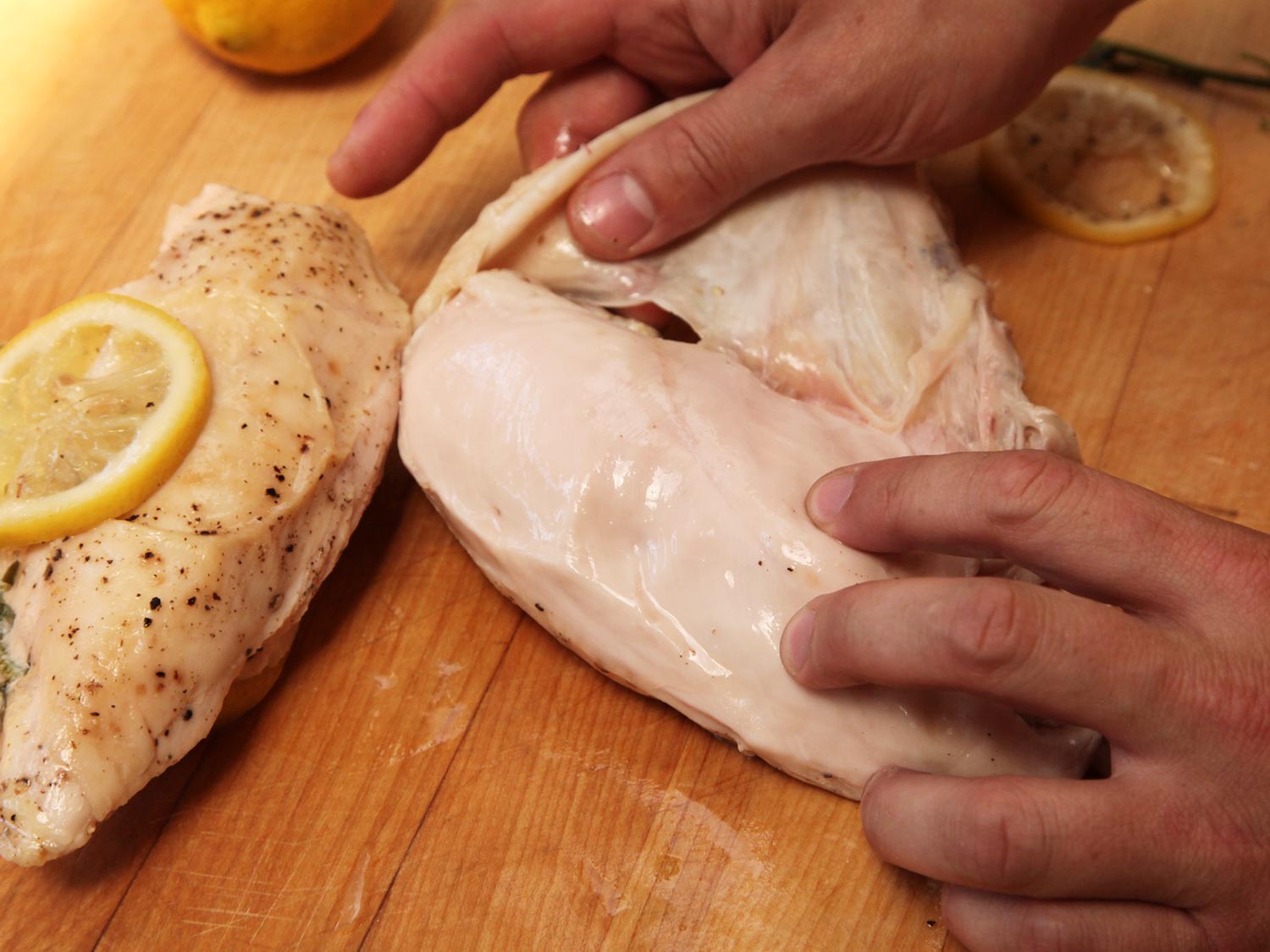
Make sure you use a quality thermometer, because many cheap instant-reads are inaccurate. This will also allow you to check multiple areas of the chicken, such as the thigh and the breast. A good thermometer will give you a reading within two or three seconds and be highly accurate. The best way to check the internal temperature of chicken is with an instant-read thermometer.
#CHICKEN BREAST DONE TEMP HOW TO#
How To Check Chicken For Done Temperature The maximum temperature to smoke chicken is 375° F.
#CHICKEN BREAST DONE TEMP SKIN#
Any lower than this, the chicken skin will be soft and rubbery. Always keep the temperature above 275° F. The Best Temperature for Smoking Chickenįor best results, smoke chicken in the 300° F range. If you are cooking in the 350☏ to 375☏ range, the chicken should only take 30 minutes on each side and have a total cook time of 1 hour. Chicken pieces such as thighs, wings, and legs will only take about 45 minutes on each side if cooking in the 300⁰F range. Probe the thighs and legs to 175° F and the wings at 165° F. However, a spatchcocked chicken will cook a little sooner because it will cook more evenly. If you are cooking in the 375☏ range, the chicken should only take 1 hour to cook. On average, it takes 1.5 to 2 hours to smoke a whole chicken if cooking at 300° F. However, the breasts can dry out easily because they are lean with very little fat. The thighs and the legs contain more blood vessels and fat than other parts of the chicken, which is why they need longer to cook. Although the USDA recommends chicken be cooked to an internal temperature of 165° F.

The ideal internal temperature for smoked chicken is 165° F in the breast, and 175° F in the thigh and legs. The fattier thighs and legs can handle more heat, but the wing tips can burn unless you shield them from the heat or foil the tips.

Since the breast is lean, it can dry out easily. It has an awkward shape with a large cavity, which makes it difficult to cook evenly. If you don’t, well, a good sauce erases all sins.Chicken presents several challenges when cooking. If you cook your chicken breasts perfectly, these embellishments will make them truly memorable. Whether it’s a tadka-ish sauce with nigella seeds, zingy ginger-scallion-lemongrass sauce, funky-sweet fish sauce caramel, or a simple, tangy, garlicky Italian dressing, sauces and toppings will add layers of flavor and moisture to a cut of meat that is otherwise something of a blank canvas. If all else fails, a saucy dressing is a foolproof, speedy way to quickly add juiciness to your chicken after it’s finished cooking. And when it comes time to serve, be sure to slice against the grain, which helps prevent stringiness. It can be tempting to dive in immediately, but waiting just five to 10 minutes to allow the juices to reabsorb into the meat makes an enormous difference. Slicing into your chicken right off the grill means you’re likely to end up with most of the juices pooling on your cutting board. Speaking of resting.ĭon’t skip this step. Use an instant-read thermometer and pull your chicken off the grill at around 160°, then temp it again after it’s rested for a couple minutes and you’ll see the internal temperature climb to a safe 165°, saving yourself from tough, overcooked chicken. While 165° is the internal temperature you want for chicken, remember that it’ll continue to cook as it’s resting-which means if you’re getting that reading while the meat is still on the grill it’s actually overcooked. You’ll want to account for carryover cooking, which is when food continues to cook even after it’s been removed from the heat source.

If you have access to a butcher, ask for skin-on, bone-in breasts, and if you’re looking at a supermarket selection, skin-on boneless is the next-best compromise, and most likely easier to track down. And the bone underneath insulates the meat from the flames, allowing for more even distribution of heat. Not only is crispy, rendered skin delicious, it protects lean, delicate meat from drying out-especially in an open-fire cooking situation. While fattier chicken thighs can handle going skinless, when it comes to grilling chicken breasts, it’s skin-on, bone-in all the way. Follow our lead and pretty soon a humble chicken breast dish-like, say, this Grilled Chicken Breast with Tadka-ish Sauce- will be the star of your next summer cookout. The good news: A couple of simple preventative measures taken along your grilled chicken journey can ensure juicy, succulent white meat every time. Quick-cooking-and quick to dry out on the grates-chicken breast is notorious for turning tough and stringy if you’re not careful. If grilling is already intimidating for you, working with an unforgiving, ultra-lean piece of meat like chicken breast can feel like an amplifier for any grilling-related anxiety.


 0 kommentar(er)
0 kommentar(er)
